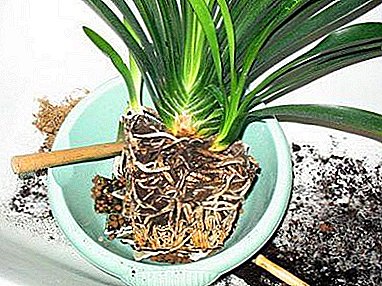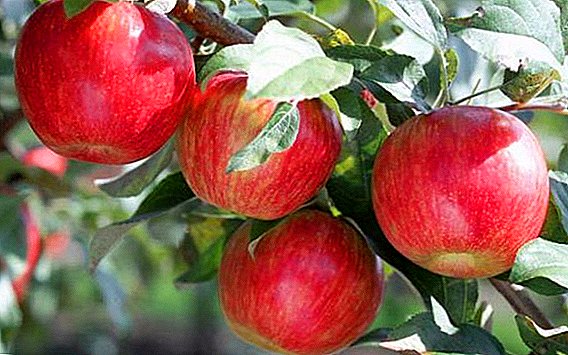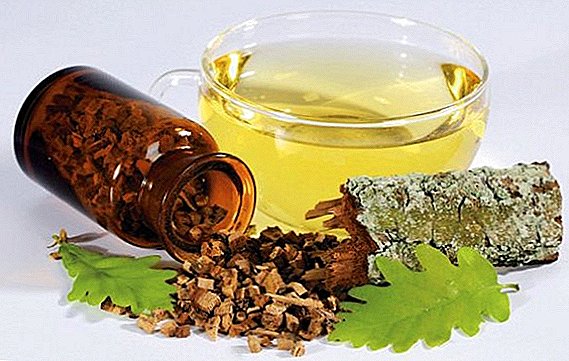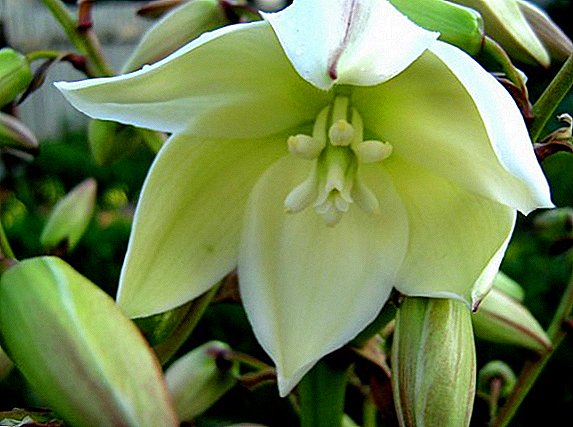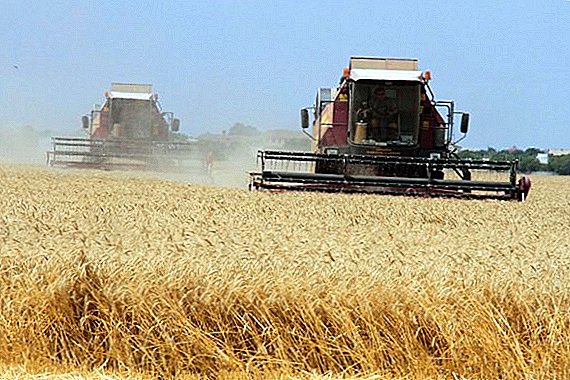
One of the earliest of vitamin vegetables is radish. He sows very quickly, is extremely unpretentious, and at the same time high-yielding.
Radish Saksa has a rounded root crop of red color with a flat head, weight within 11 grams. The flesh of this variety of radish is tender and juicy white.
The taste of radish Sachs - mild-hot, excellent taste. Sachs variety is one of the most common early varieties of radish for growing in greenhouses.
What is not a perfect vegetable? In particular, the radish variety "Saks" is also such. A good harvest can grow not only experienced gardeners, and those who are just beginning this way.
Characteristics and description of the variety
- Appearance.
Its roots are small, spherical in shape, small in size and weight. Color - bright red with a crimson hue. Form - rounded, pulp - milky-white, has a dense structure.
Sachas variety is distinguished by simultaneous ripening and a very neat rosette with a small foliage. - Sowing time.
Variety "Saks" refers to the number of medium - early. He matures very quickly. And this causes the love of the main part of gardeners.
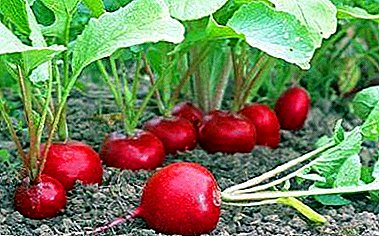 The average weight of one radish.
The average weight of one radish.It is approximately 10-20 grams. According to other sources, 5-10 grams.
- What is the yield?
Productivity grade - 4 kg per square meter. This is a fairly high figure. Other sources say that this indicator is only 1 kg per square meter. According to the third sources, the average variety can give about 3.6 kg per square meter.
Perhaps different indicators are associated with different regions and, as a result, different weather conditions that are in them.
- Where to grow?
The grade is intended for cultivation in greenhouses, and also on an open ground. But there are also cases of growing the house, in containers or boxes.
- Ripening.
Somewhere in a month you can try the first radish.
- What kind of soil prefers.
Soil prefers light, fertile. Ideally - just out of the snow. Therefore, the ground should be quite wet. That is, a prerequisite - to monitor the watering. If this is not done, the radish will also grow, but the taste will be completely different.
It is possible to plant radishes on those beds where any vegetable crops except for crucifers were grown.
Before sowing, it is recommended to apply fertilizer. One of the options is "Aelita - vegetable". It contains many trace elements that provide essential nutrition during the growing season.
The rest of the variety is not legible to the soil. According to other sources, it is said that this radish prefers to be grown on loose, sandy and loamy soils.
- Crop yield.
The harvest has good keeping quality. If you believe the packaging, you can store and sell up to 2 years.
- Breeding history.
The Sachs variety was obtained at the All-Russia Research Institute of Vegetable Breeding and Seed Production using a mass selection method from a sample originating from another country. Variety zoned in 1949. The modern type of variety - Saksa RS, was included in the State Register of Varieties in 2007.
- Differences from other varieties.
"Sachs" is different slightly raised rosette of stalks with leaves.
Also has a great taste. It is soft, very juicy, with a somewhat unusual taste.
A photo
You will see on the photo a radish of the variety in question:





Advantages and disadvantages
The merits of the variety:
- Very fruitful.
- It can be grown all year round.
- The vegetable is very juicy and generally really tasty.
- Stability - up to 2 years.
- It ripens very quickly.
- The plant is extremely small.
- Designed for sowing in early spring. Accordingly, the gardener will receive a harvest very early.
- In most cases, the seeds are very low price.
- Seeds comply with the requirements of GOST and are absolutely safe for the health of people and animals. Do not contain GMOs.
disadvantages: He is only one. Radishes, and especially this variety, must be watered frequently. Roughly speaking, the ground should always be wet. It takes a little time. But experienced gardeners have very little of it.
What and where is it used for?
It is used mainly in fresh form and for salads. Radish in general and in this class in particular contains a large amount of vitamins.
Features
The variety can be planted both in sunny places and in the penumbra zone. The recommended scheme of planting varieties: 5 to 10 cm. The radish places the highest demands not so much on moisture, as on illumination.
Best of all, the crop is formed at a light day of 10-12 hours. Otherwise, the radish has a habit of shooting and little power to invest in the formation of fruits. But there are reviews that it is this variety that produces fruits well even with a long light day.
Growing up
 When choosing a site for planting, you need to take into account that radish is an incredibly sun-loving plant. The first landing can be done in late March - early April (it all depends on the region and weather conditions). Then you can plant in July - the first of August. Seeds need to be sown shallow. At a depth of 1 cm or one and a half cm. The distance between the beds should be at least 12 cm. The optimum temperature for planting is 18-20 degrees. Of course, with a plus sign.
When choosing a site for planting, you need to take into account that radish is an incredibly sun-loving plant. The first landing can be done in late March - early April (it all depends on the region and weather conditions). Then you can plant in July - the first of August. Seeds need to be sown shallow. At a depth of 1 cm or one and a half cm. The distance between the beds should be at least 12 cm. The optimum temperature for planting is 18-20 degrees. Of course, with a plus sign.
To care for this type of radish is an easy and very easy task. All that is needed is to water and feed the plant in time. If planting thickened, they need to order. Between them you need to leave at least 5-6 cm.
Harvesting
The first harvest can be harvested, as already mentioned, on days 23-28 after the first shoots appear.
Diseases and pests
Radish of this variety is not prone to tsvetushnosti, tolerates drought well. Due to this, you can get a harvest all spring-summer period. Also this the variety is relatively resistant to powdery mildew. It is also resistant to flabbiness. All other diseases, as well as pests, can affect Sax.
Similar varieties
The following varieties look like on Saksa:
- French breakfast.
- Presto.
- Carmen
- Dawn
All of them - from a series of early varieties of radishes.
Experienced gardeners are advised to choose the seeds of early varieties on the market. This applies not only to radish, but all vegetables. Why? The weather in Russia, at least in the middle lane, is very unpredictable. And an early variety has more chances to give up its entire crop.
Much depends on the region. But for a couple of days, a timing adjustment may occur. Radish will grow in any case, even with minimal care.


 The average weight of one radish.
The average weight of one radish.
